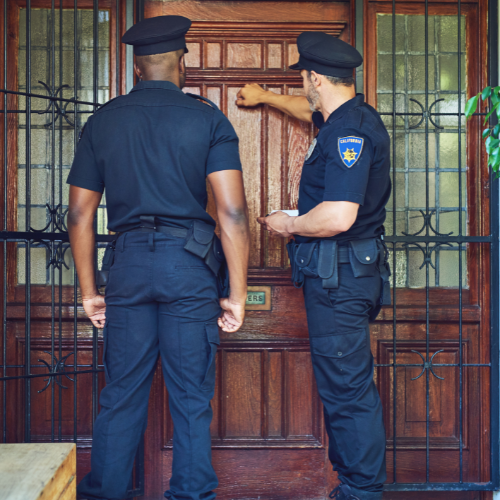In Massachusetts, a 209A order is a domestic violence restraining order, designed to protect individuals from abuse by a family or household member. It can impose various restrictions, such as no contact or staying away from the petitioner. A 258E order, on the other hand, is a harassment prevention order for individuals experiencing harassment, defined as three or more acts of willful and malicious conduct aimed at causing fear, intimidation, abuse, or damage to property. Unlike 209A, 258E doesn’t require a specific relationship between the petitioner and the respondent.
Understanding the Basics of Protection Orders
209A Restraining Orders:
Protecting Against Domestic Violence
The 209A restraining order, also known as a domestic violence restraining order, is a civil order issued by the court to protect individuals from harm by a family or household member. This type of order is designed to offer protection from:
- physical abuse,
- sexual assault, or
- serious imminent harm.
It restricts the abuser’s ability to contact or come near the victim, including through phone calls and text messages. To obtain a 209A order, the victim must have a specific relationship with the abuser, such as being family members, household members, or in a substantive dating or engagement relationship
258E Harassment Prevention Orders:
Guarding Against Malicious Conduct
The 258E harassment prevention order is a legal measure that protects individuals from harassment by anyone, not just a family or household member. Harassment is legally defined as three or more acts of willful and malicious conduct aimed at causing:
- fear,
- intimidation,
- abuse, or
- damage to property.
This order is broader in scope compared to the 209A, as it does not require a specific personal relationship between the petitioner and the respondent. It is particularly useful in situations involving stalking, criminal harassment, or sexual assault by a non-family member.
The Legal Process:
Filing for Protection
Initiating the Process
To initiate either a 209A or 258E order, you must file a petition in the appropriate court:
- Probate and Family Court,
- District Court,
- Superior Court or
- Boston Municipal Court.
The process starts with completing detailed forms, providing as much evidence as possible about the abuse or harassment. This can include police reports, medical records, or any communication like threatening emails or text messages. The filing fee is waived for these petitions, making it more accessible for victims seeking protection.
Temporary Orders and Full Hearings
After filing, a judge may grant a temporary order on the same day, based on the information provided. This temporary order, often issued without your abuser being present (ex parte), offers immediate protection. Within a short period, usually 10 days, a full court hearing is scheduled where both parties can present their case. This hearing determines if a permanent order, which can last up to a year, is warranted.
Legal Standards and Evidence
Proving Your Case
The legal standard for obtaining a 209A or 258E order is “preponderance of the evidence,” meaning it’s more likely than not that the abuse or harassment occurred. This standard is less stringent than “beyond a reasonable doubt,” used in criminal cases. Victims need to demonstrate a substantial likelihood of immediate danger of abuse or harassment to persuade the court.
The Importance of Documentation
Documenting every incident of abuse or harassment is crucial. Detailed records, including:
- dates,
- times, and
- the nature of the incidents
bolster your case.
- Photographs of injuries,
- damaged property, and
- testimony from witnesses
can also be pivotal.
In cases of verbal threats or harassment, keeping:
- voicemails,
- emails, or
- text messages
is vital evidence.
Consequences for the Abuser
Legal Implications
If a court issues a 209A or 258E order against someone, they face significant legal punishment. Violating the order is a criminal offense, leading to:
- arrest,
- criminal charges, and
- potentially jail time.
For 209A orders, this includes any attempt at:
- contact,
- physical violence, or
- entering the victim’s residence.
For 258E orders, it encompasses continuing harassment or abuse as defined by the order.
Criminal Record and Employment
A violation of either order can result in a criminal record, which may affect employment opportunities, especially in jobs requiring background checks. It’s essential for petitioners and respondents to understand the severe implications for the accused and proceed with a clear understanding of their goals and the legal framework.
Choosing the Right Order for Your Situation
Assessing Your Needs
Deciding between a 209A and 258E order depends on your relationship with your abuser and the type of protection you need. For domestic situations involving family or household members, a 209A order is appropriate. For harassment from someone without a personal relationship, or from a stranger, a 258E order is the right choice.
Consulting with an Affordable Attorney
While it’s possible to navigate this process alone, consulting with an experienced attorney can provide valuable guidance and advocacy. An attorney can help you prepare your case, gather evidence, and represent you in court. We can also advise on other legal options or strategies to enhance your protection.
At Afford Law, we don’t want money to get in the way of your safety. We offer a sliding-scale fee based on your income. The less you earn, the less you pay. Our mission is to provide experienced legal help you can afford.
Support Beyond the Courtroom
Additional Resources and Support
Obtaining a restraining or harassment prevention order is a significant step towards ensuring your safety, but it’s often just part of the solution. Engaging with:
- local support groups,
- counseling services, and
- advocacy organizations
can provide emotional support and practical advice during this challenging time. The Massachusetts court system and various non-profits also offer resources to help victims navigate the legal process and recover from their experiences.
Reporting Violations
Once an order is in place, it’s crucial to report any violations to the local police department immediately. Violations are taken seriously, and law enforcement can act to enforce the order, providing an additional layer of protection. Keep a record of any incidents that occur after the order is issued, as they may be needed for legal action or to extend the order in the future.
Planning for the Future
Extension and Modification of Orders
Protection orders are typically issued for up to a year, but they can be extended if there’s evidence of ongoing risk. When the order is set to expire, you can request an extension. Take a look at your order. There is a date and time listed on it for your next court date. If you want the order extended, show to court on that date and tell the judge. You’ll have to make an argument for extending the order. Your abuser was given notice of that date as well. They may, or may not, be there.
It’s also possible to request modifications to the order if circumstances change, ensuring the level of protection reflects the current situation. If you want to change or terminate the order, you can ask the court to do so. The judge must be satisfied that you are no longer in fear for your safety. You may also ask for additional protections if the original order doesn’t address your specific situation.
Long-Term Safety Planning
Working with an attorney or an advocate to develop a long-term safety plan is crucial. This plan might include:
- changing routines,
- securing your home, and
- using technology wisely to avoid unwanted contact.
Safety planning is a personalized process, tailored to address the specific threats and challenges you face.
Conclusion
Navigating the legal system to obtain a restraining or harassment prevention order can challenging, but it’s a critical step towards protecting yourself from abuse or harassment. Understanding the differences between a 209A and a 258E order, the evidence required, and the legal process helps prepare you for what lies ahead.
While this journey may seem overwhelming, remember that you’re not alone. Legal professionals, advocacy groups, and the community are here to support you every step of the way.
For those facing these difficult circumstances, remember that affordable legal help is available. Protecting your safety and well-being is of the utmost importance, and the Massachusetts legal system provides mechanisms to help you achieve that.
Help Getting a Restraining Order in Massachusetts
If you’d like help getting a Restraining Order without paying an expensive attorney, we can help. With our Legal Coaching we can walk you through every step to make sure you’re ready for your hearing. The first thing to do is see if you qualify for a Massachusetts Restraining Order. Click on the link below to see if you qualify for either type of Restraining Order.
Legal Disclaimer
This article is intended for informational purposes only and does not constitute legal advice. Please consult with an attorney to discuss your specific circumstances and receive tailored guidance.

I have been practicing law in Massachusetts since 1995. My focus is in the areas of criminal and family law. I’m dedicated to providing high-quality legal help at an affordable price. I practice throughout Massachusetts. I earned my MBA from the University of Rhode Island in 2023. I earned my JD from New England School of Law in 1994. I earned my BA from Rhode Island College in 1990.


